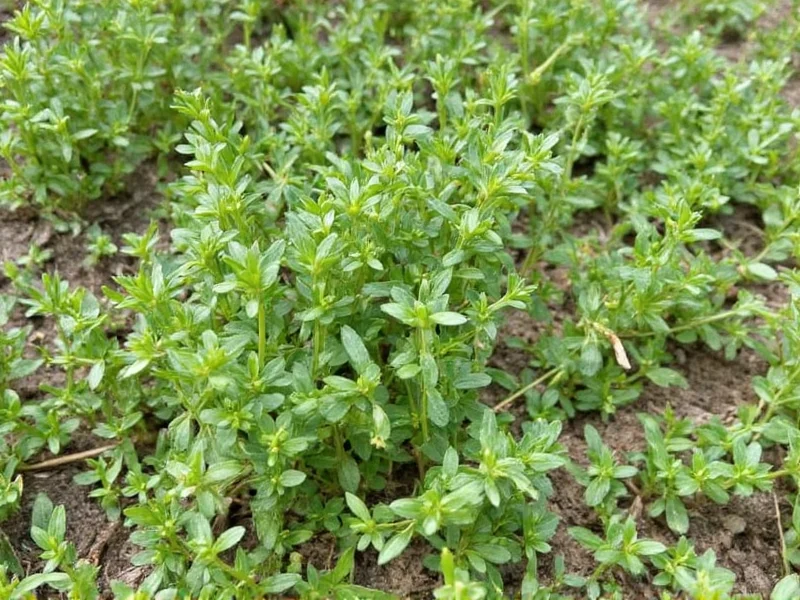Understanding the Herb Behind the Pun
When you hear \"it's about thyme,\" it's more than just a clever play on words—it's an invitation to explore one of the most valuable herbs in culinary traditions. Thyme (Thymus vulgaris) belongs to the mint family and has been used for centuries not only as a flavor enhancer but also for its medicinal properties. This perennial herb grows as a small shrub with tiny leaves and produces delicate flowers that attract beneficial insects to gardens.
Types of Thyme Worth Knowing
While common thyme is the variety most frequently used in cooking, numerous cultivars offer unique flavors and appearances:
| Type of Thyme | Flavor Profile | Best Uses |
|---|---|---|
| Common Thyme | Earthy, slightly minty | Stews, roasts, marinades |
| Lemon Thyme | Citrus-forward with lemon notes | Fish dishes, salad dressings, desserts |
| French Thyme | Stronger, more floral | Herb blends, sauces, vegetables |
| Caraway Thyme | Subtle caraway undertones | Bean dishes, breads, root vegetables |
Culinary Applications of Thyme
Chefs consistently reach for thyme because of its remarkable versatility. Unlike some delicate herbs that lose flavor when cooked, thyme actually intensifies during the cooking process, making it ideal for slow-cooked dishes. When using fresh thyme versus dried thyme, remember that dried thyme has about three times the potency, so adjust measurements accordingly.
For optimal flavor extraction, add thyme early in the cooking process for soups, stews, and braises. The woody stems contain significant flavor, so many professional cooks add whole sprigs during cooking and remove them before serving. When using thyme in rubs or finishing dishes, strip the leaves from the stems by running your fingers downward along the stem.
Health Benefits Backed by Tradition and Science
Thyme health benefits extend far beyond flavor enhancement. This herb contains thymol, a compound with documented antimicrobial properties. Traditional medicine has long used thyme for respiratory support, and modern research suggests thyme may help with:
- Supporting respiratory health through natural expectorant properties
- Providing antioxidant compounds that combat oxidative stress
- Offering anti-inflammatory effects that may benefit cardiovascular health
- Containing essential minerals like iron, manganese, and calcium
When incorporating thyme for health benefits, fresh thyme generally contains higher levels of volatile oils than dried varieties. A simple thyme tea can be made by steeping 1-2 teaspoons of fresh thyme in hot water for 5-10 minutes.
Growing Your Own Thyme: Simple Guidelines
Learning how to grow thyme in containers is straightforward, making it accessible even for apartment dwellers. Thyme thrives in well-draining soil with plenty of sunlight. When planting thyme, remember these key points:
- Use a pot with drainage holes and a sandy, well-draining potting mix
- Water only when the top inch of soil feels dry to prevent root rot
- Provide at least 6 hours of direct sunlight daily
- Harvest by cutting stems just above a leaf node to encourage bushier growth
Thyme is remarkably drought-tolerant once established, making it an excellent choice for beginner gardeners. For those wondering about thyme winter care, most varieties are perennial in USDA zones 5-9, but container plants may need protection from extreme cold.
Preserving Thyme for Year-Round Use
Preserving fresh thyme properly ensures you can enjoy its flavor throughout the year. The three most effective methods include:
- Freezing: Chop fresh thyme and place in ice cube trays with olive oil or water
- Drying: Hang small bundles upside down in a dark, well-ventilated area
- Vinegar infusion: Steep sprigs in vinegar for flavorful cooking additions
When substituting dried thyme for fresh in recipes, use one-third the amount since dried herbs concentrate the flavor. For those seeking thyme substitution in recipes when it's unavailable, oregano or marjoram can work in a pinch, though they'll create a slightly different flavor profile.
Perfect Pairings: What Dishes Use Thyme Best?
Certain ingredients form classic combinations with thyme that elevate dishes from ordinary to extraordinary. Some of the best dishes to use thyme in include:
- Lamb dishes, where thyme complements the rich flavor
- Bean and legume soups, adding earthy depth
- Roasted root vegetables, enhancing natural sweetness
- Egg dishes like frittatas and quiches
- Fish preparations, particularly with lemon thyme varieties
Professional chefs often combine thyme with other herbs in the classic French blend \"bouquet garni,\" typically including parsley, bay leaf, and thyme tied together for easy removal after cooking. This technique showcases why it's truly \"about thyme\" in professional kitchens worldwide.











 浙公网安备
33010002000092号
浙公网安备
33010002000092号 浙B2-20120091-4
浙B2-20120091-4